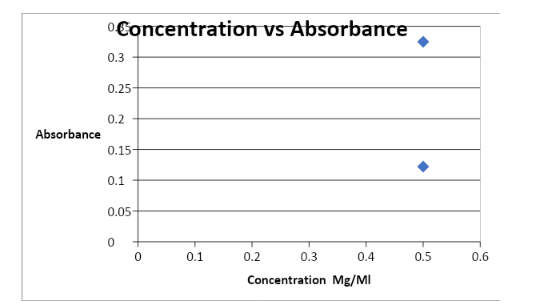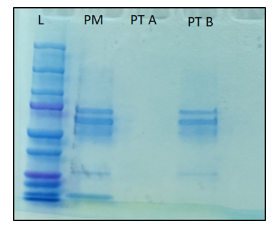Comprehensive Analysis: Lab Report Guidelines, UTI Diagnosis, and PDP in Biomedical Studies
1.Microscopy
Discussion of results.
Preparation of the urine sample is carried out in the following ways.
Analyze the urine sample: lab analysis will be carried out with the urine sample looking for bacteria, red blood cells, or white blood cells. For avoiding the sample’s potential contamination, the patient may be first instructed to wipe the vaginal area with an antiseptic for the collection of the midstream urine.
In a lab, growth of urinary tract bacteria: the urine’s lab analysis at times is followed by a urine culture. The test indicates what bacteria causes to an infection and the kind of medications that is most effective.

Creation of urinary tract images: the patient if found to be infected frequently; she can have a MRI, CT scan or ultrasound.
Use of scope for seeing inside the bladder: having recurrent UTIs may need cystoscopy with the use of thin, long tube with lens for seeing her bladder and urethra.
Gram –ve identified and bacterial species suggested with good justification.
Gram-negative bacteria are a bacteria’s specific type with unique traits. They cause infections in any part of the body. The infection sites that are common include the urinary tract, lungs, soft tissues, nervous system, and bloodstream.
The patient has got E. Coli. This infection is most common in bladder and urethra.
Infection in bladder (cystitis): E. Coli causes this UTI. Cystitis may be caused by the sexual intercourse, although sexual activeness is not needed for developing it. Because of anatomy, all women have the risk of this disease; specifically because of the short distance that covers between the urethra and the anus and from the urethral opening and the bladder.
During pregnancy, UTIs infections are common and the causative organism that is most common is the Escherichia coli. The pyelonephritis or cystitis can be developed in the most common way by the asymptomatic bacteriuria. For the bacteriuria, there should be screening for all pregnant women with antibiotics such as cephalexin, sulfisoxazole, or the nitrofurantoin.
Treatment options comprehensively discussed with references cited correctly.
The pregnant woman like the patient in this case must get the treatment after the identification of the bacteriuria. The antibiotic’s choice should be addressing the infecting organism that is most common, which is gram-negative gastrointestinal organisms. There is also being safety of the antibiotic for both the foetus and the mother. Historically, the choice of the drug is ampicillin. However, in the recent times, there has been increasing resistance of the E. coli to ampicillin. There is 20 to 30 percent ampicillin resistance of E. coli that has been subject to culture from urine in the setting of out-patient (Argemi et al., 2019). A good choice is Nitrofurantoin (Macrodantin) because its urinary concentration is high. As an alternative to it, cephalosporins are tolerated well and treat the important organisms adequately. One new antibiotic is Fosfomycin (Monurol) which should be taken in a single dose. In the first and second trimesters, Sulfonamides can also be taken, although during the third trimester, sulphonamides usage carries the risk of the infant developing kernicterus. Other antibiotics that are common such as tetracyclines and fluoroquinolones is not advised to be prescribed in the time of pregnancy as they can have on foetus with toxic effects. For comprehensive healthcare dissertation help, consider exploring all the possible nuances of antibiotic treatments during the phase of pregnancy.
Gram positive identified and bacterial species suggested with good justification
UTI’s one of the common causes is gram-positive bacteria, especially amongst the people who are pregnant or the people having other UTI risk factors.
Point of care diagnosis of UTI
While the UTI diagnosis’ gold standard is the urine’s bacterial culture, there is common use of dipstick urinalysis in the point-of-care diagnosis. However, in the case of pregnancy, dipstick analysis with the use of pyuria, LE, or the presence of nitrites has less reliability as an UTI’s indication per the definition of microbiology of cut off of 105CFU/ml (Jido, 2014). While the positive of dipstick urinalysis for the nitrites and/or LE in a urine sample that is clean catch, have consistency with the UTI diagnosis. UTIs can be missed by these tests in meeting the bacteriuria diagnosis’ gold standard related to the pregnancy’s adverse outcomes.
Complicated UTI
Complicated UTI involves pyelonephritis or cystitis occurring in people with functional, metabolic, or anatomic risk factors making the UTI with greater difficulty to treat. The UTIs that are complicated often has the occurrence in institutional and/or nosocomial setting, especially in people with functional or structural alterations of the urinary tract or other immunological, metabolic, or renal disorders. These people have higher risk of polymicrobial or gram positive UTI (Matthews and Lancaster, 2011).
Virulence factors of S. saprophyticus
As UTI’s one of the most frequent agent of causation, S. saprophyticus is also studied best with virulence determinants having necessity for causing infection. To scan murine bladders’ micrographs being infected with wild type S. saprophyticus have shown the organisms having the adherence over the bladder’s entire surface but apparently with selective adherence for the tightening the junctions between separate epithelial cells. There are many adhesions having inkages with S. saprophyticuscolonization of the urinary tract.
Treatment
The outpatient treatment is done with the antibiotics in the complicated or symptomatic UTIs and pyelonephritis. There is importance in taking into consideration the patterns of specific local resistance when the appropriate antibiotic coverage is chosen.
The chosen antibiotic in uncomplicated S. saprophyticus UTIs has been the Macrobid or the nitrofurantoin 100 mg taken twice orally for five to seven days. The other antibiotics to be taken is Trimethoprim-sulfamethoxazole (TMP-SMX) 160 mg/800 mg which must be administered for three days twice daily by mouth and is alternately given in the uncomplicated cases.
There should also be addressing of the symptomatic pain for nausea and pain. The UTIs which is acute and uncomplicated is not a likely causation of renal injury. Therefore, the preferred analgesic is the NSAIDs. Pyridium can be given in alleviating the dysuria associated with it. Promethazine or Ondansetron has been prescribed commonly as anti-emetics. The patient may be noticing symptomatic relief from antibiotic treatment alone within 36 hours.
2. Spectroscopy
Presentation of graph plus calculations of unknowns using equation. Discussion of results.
Firstly, to find out protein concentration, the following formula has been used.
C1V1 = C2V2
Where,
C1= stock (start) concentration
C2= required (final) concentration
V1= volume of stock (start) solution
V2= total volume required (final).
C2 = C1V1/V2................................................................................................(1)
It is given,
The initial concentration of protein in 1 Litre 24 hour urine sample (mg/ml)
i.e. C1 = 1.0
With C1 = 1.0, the initial volume is given as 0.500
I.e. V1 = 0.5
With V1 = 0.5, final volume (V2) is given as 1.
i.e. V2 = 1
Interpolating C1, V1, and V2 in the equation 1, we get C2 as follows.
C2 = 1x0.5/1 = 0.5

In the above table, the absorbance of Patient A and B are given.
A standard graph is drawn of the results from the above table by plotting concentration of BSA on the X axis and absorbance on the Y axis

What we get here is a non-linear standard graph
Discussion
It is a non-linear standard curve in the results due to absorbance values of higher than one for both patients. In such a case, it is better in diluting the samples to the curve’s linear portion as the there is high relative error in the absorbance value.
It is of utmost importance in considering the error occurring at high concentration. The discussion surrounding the deviations of Beer’s law have shown that many problems ensued at the sample’s higher concentration. At the point when radiation of 10 percent is subject to transmission through the sample corresponding to a value of absorbance as 1. The logarithmic relationship between transmittance and absorbance rapidly raise the values of absorbance over the radiation’s 10 percent that the sample absolves. The relatively small transmittance change can lead to absorbance’s large change at high concentration. Due to Beer’s law’s considerable negative deviation and lacking of precision to measure the absorbance value of higher than one, it can be reasonably assumed that the measurement error of the absorbance would be high when the concentrations are high.
3. Electrophoresis
Presentation of data and discussion of results.
Estimation of the size of the protein
Concentration = size of the protein/volume of the protein (solution)
Or size of the protein = Concentration x volume
The concentration for both Patient A and B has been found to be 0.5
Volume or the solution for both patient A and B has been 10 l
Interpolating the figures, we get
Size of the protein = 10 x 0.5 = 5 l
Thus, the size of the protein for both patient A and B is 5 l
Kind of proteinuria Patients A and B are suffering from?
Proteinuria is characterized by the increased protein quantities in the urine detectable by various methods which include reagent-strip tests. The reagent-strip tests are usable in point-of-care testing environment, and availability of the chemical tests in the lab. The immunoassays of high level of specificity are used for specific proteins that includes albumin. For proteinuria, screening in the proteinuric renal disease’s initial detection and confirmation has diagnostic value. Proteinuria has also been a key predictor of progressive damage of kidney and an independent and potent cardiovascular risk predictor and marker (Miettinen et al., 1996).
What does this mean for mother and baby?
In the urinary tract, dilatation is frequent in pregnancy particularly in the last trimester. There is dispute regarding the dilatation’s causes, although some advocates obstructions such as hormonal effects. This syndrome has broad spectrum, where there can be women who are completely asymptomatic, while some others can experience transient mild loin pain and there can be also patients experiencing recurrent episodes of lower abdominal pain and/or severe loin pain. On occasions like these, changes in anatomy have exaggerations with massive renal and ureteral pelvis distension along with small degree of renal cortical width’s reduction. On rare occasions, there can be extreme changes and precipitation of “over-distension syndrome” even with acute and reversible renal failure (Lindheimer et al., 2008).
If UTI is not treated properly, the result can be kidney infection. Kidney infections can be the causation of low birth weight and early labour. If the UTI is treated properly and early, there should not be any harm to the baby.

Patient A is normal and does not have any band in the SDS Page gel. This indicates Patient A does not contain any protein. In Patient B, there are multiple bands, although in small numbers and he carries proteinuria. This indicates that Patient B has multiple proteins, although in small numbers.
4.PDP
Attraction to programme
The attraction to this programme is centred on the PDP’s help to the students in becoming more confident, independent, effective and self-directed learners. This PDP course will help me as a biomedical student to acquire adequate knowledge in biology, reasoning and thinking skills and complex problem solving skills.
The programme will also help to understand the learning and relating it to the wider context. The study skills are also improved by the PDP as the management of the career. The programme will also help to articulate personal goals and the evacuation of the progress.
Aspirations now,
The current aspirations are to develop personal profile comprising of thinking, planning, doing, and reflecting. My current aspiration, as a biomedical student, is also to learn to be thorough and how to pay attention to details.
Thinking is about where I am now and the skills I need to learn higher education in the field of bio medics, reflection of my strengths and the targeted improvements I would like to achieve.
Planning is where I want to reach and development in terms of knowledge and skills I would like to achieve and the way I can acquire them with available learning opportunities. As a biomedical student, one of the key skills I need to acquire is to learn analytical skills in the context of my subject
Doing is how I put my plan of action to practice. In doing that, I would record the developments and what I achieve. Finally, to identify when I have reached the goal I have set out for.
Reflection must be done on what I have learned and achieved and also the future goal that I have set out.
Future aspirations,
The future aspirations include the followings.
Completing the PDP

The reflection or the audit to be done of my competencies with regards to bio medics and the related employability, graduate, and transferable goals and skills set out for the next year
I would investigate my career evidences in hospitals, nursing homes, and clinics
Making an up-to-date CV
Skills rating now and future showing appropriate reflection.


References
Miettinen, H., Haffner, S. M., Lehto, S., et al. (1996) ‘Proteinuria predicts stroke and other atherosclerotic vascular disease events in nondiabetic and non-insulin-dependent diabetic subjects’, Stroke, vol.27, pp.2033-2039.
Lindheimer, M. D., Konrand, K. P. and Karumanki, S. A. (2008) Seldin and Giebisch’s The Kidney (4th Ed), USA: Elsevier INc.
Argemi, X., Hansmann, Y., Prola, K. and Prévost, G. (2019) ‘Coagulase-Negative Staphylococci Pathogenomics’, Int J Mol Sci., 11;20(5).
Jido, T. A. (2014) ‘Urinary tract infections in pregnancy: evaluation of diagnostic framework’, Saudi J Kidney Dis Transpl., 25:85–90.
Matthews, S. J. and Lancaster, J. W. (2011) ‘Urinary tract infections in the elderly population’, Am J Geriatr Pharmacother, 9:286–309.
Dig deeper into Community-Acquired Pneumonia with our selection of articles.
- 24/7 Customer Support
- 100% Customer Satisfaction
- No Privacy Violation
- Quick Services
- Subject Experts



